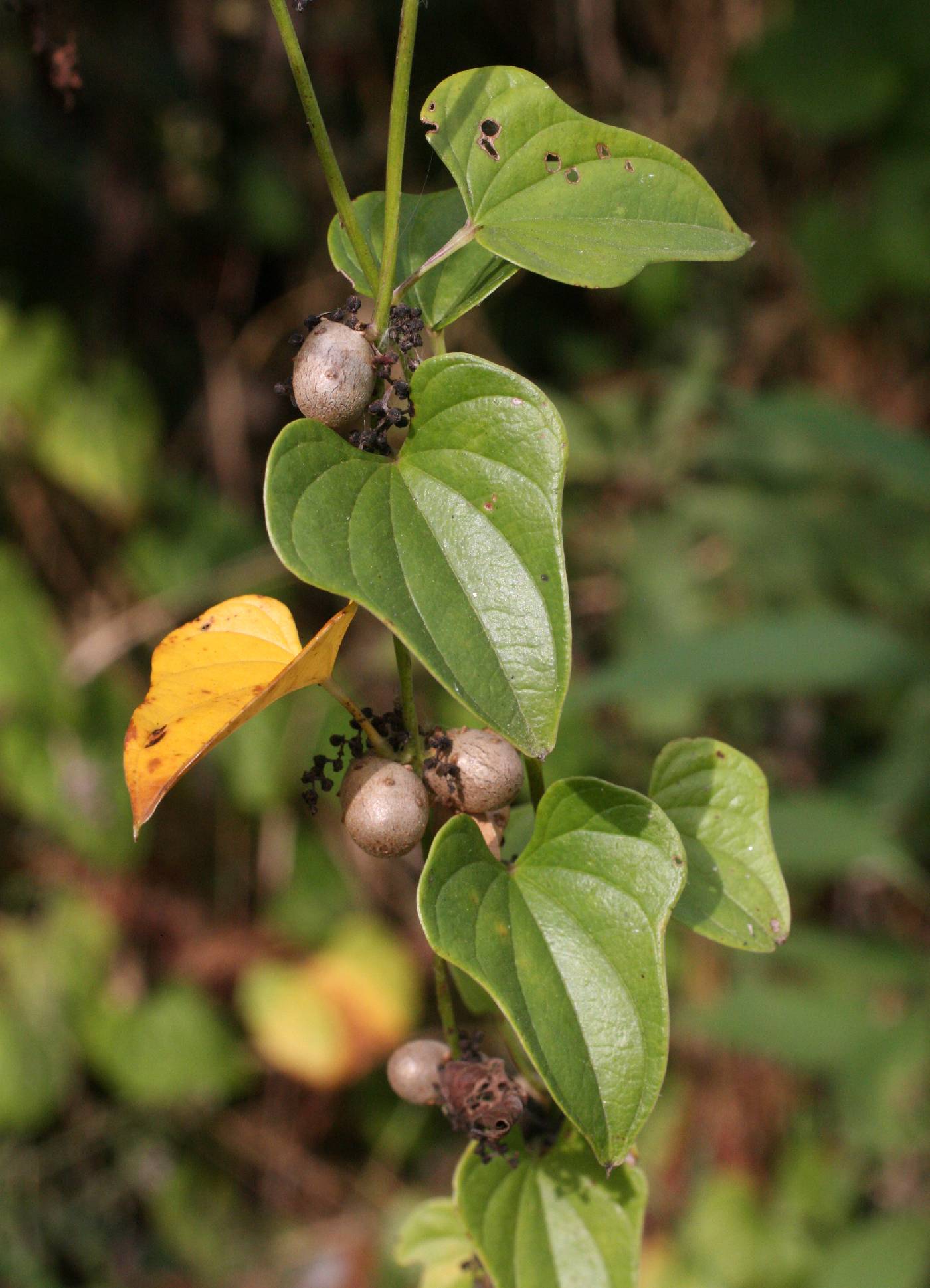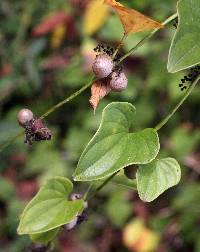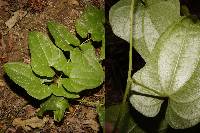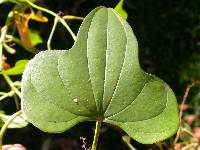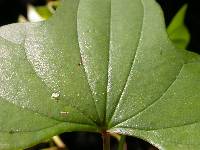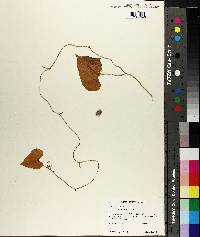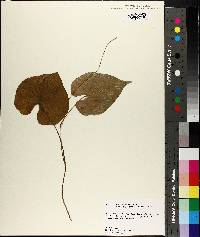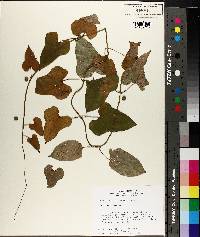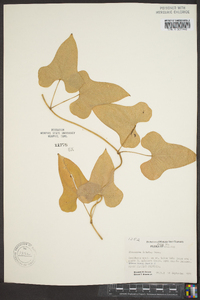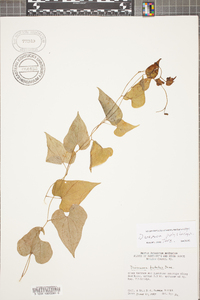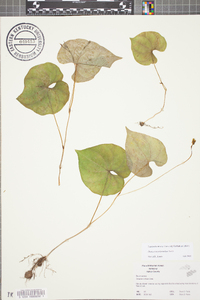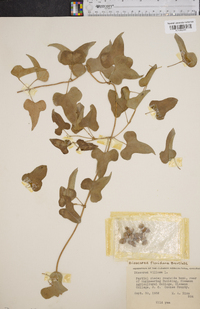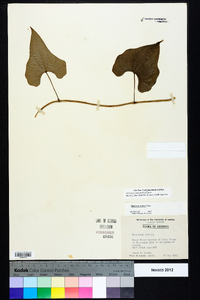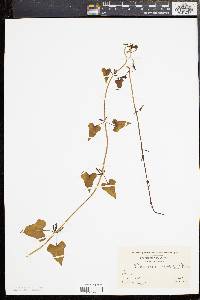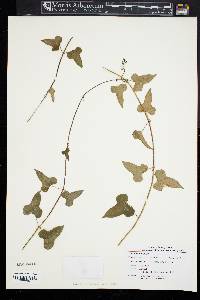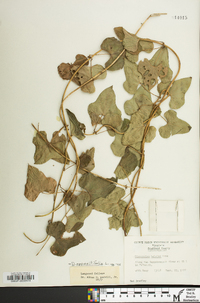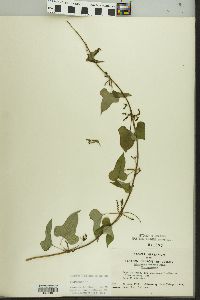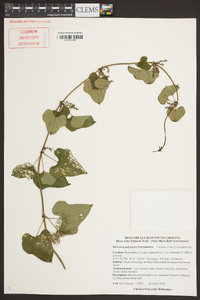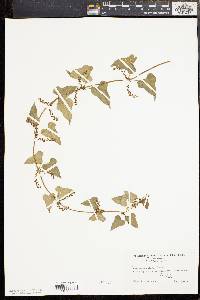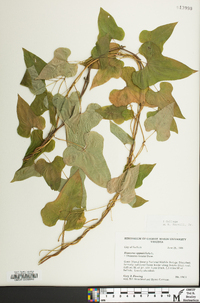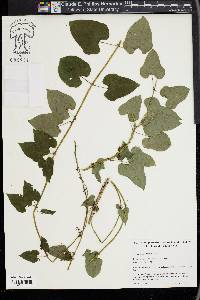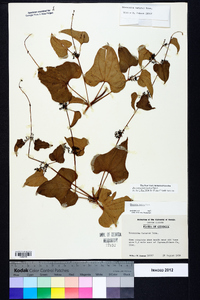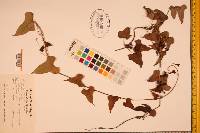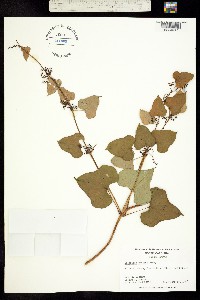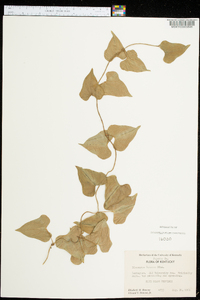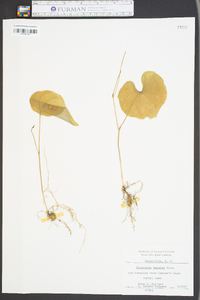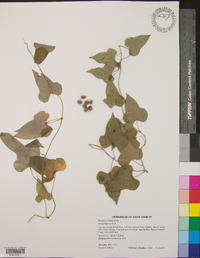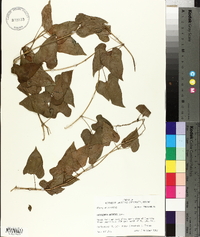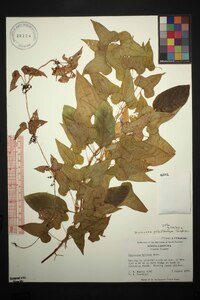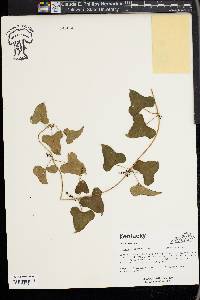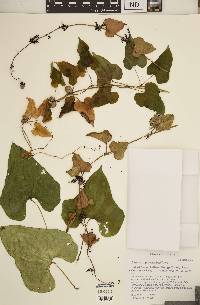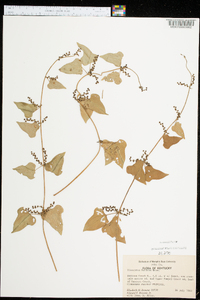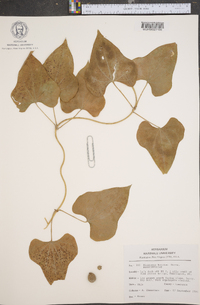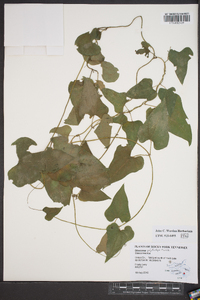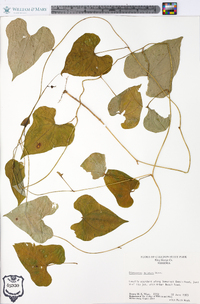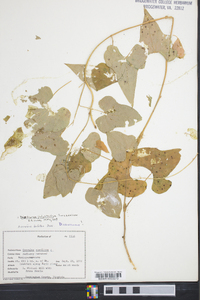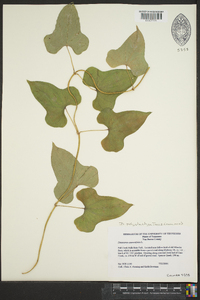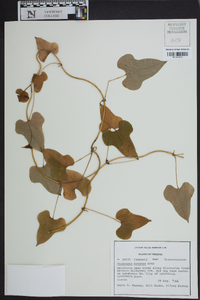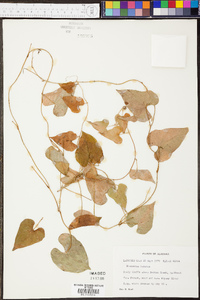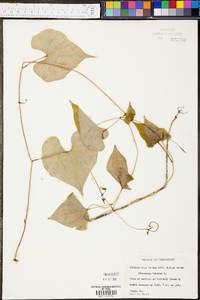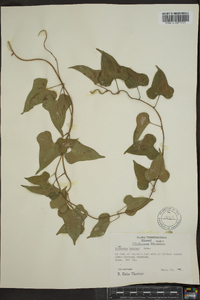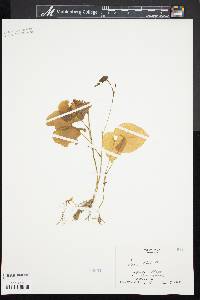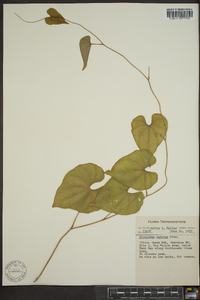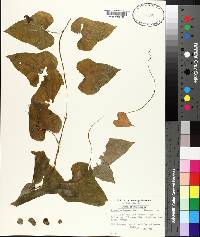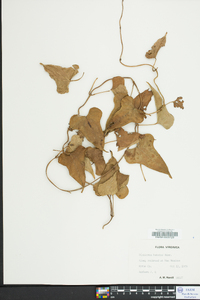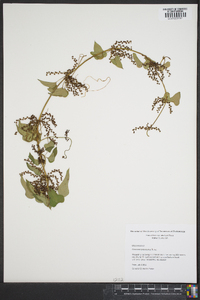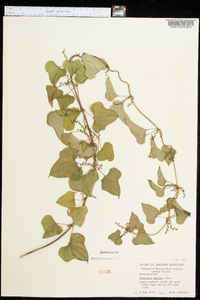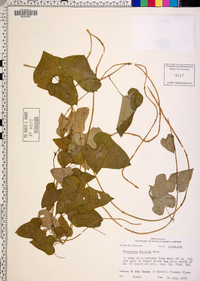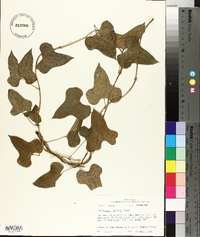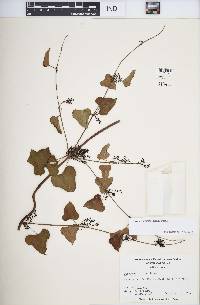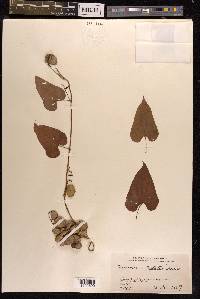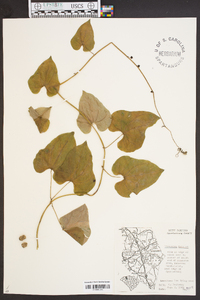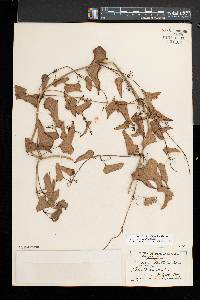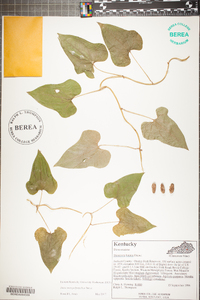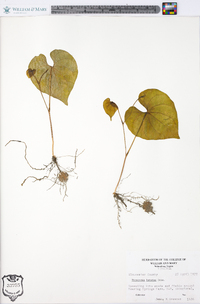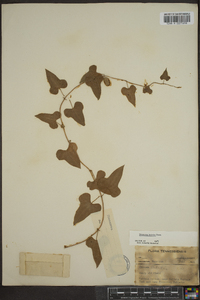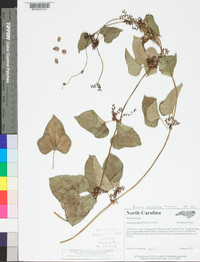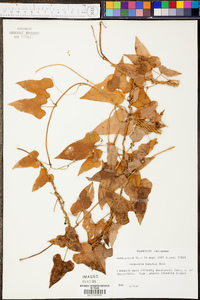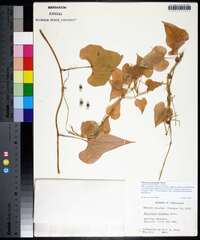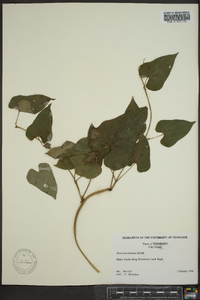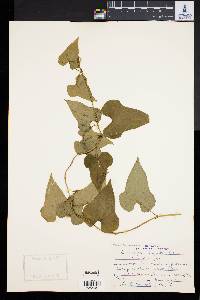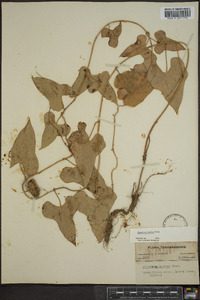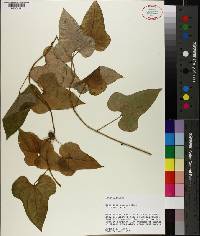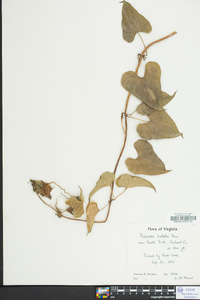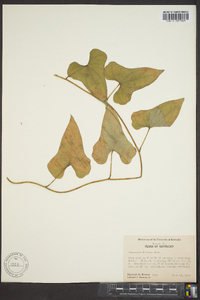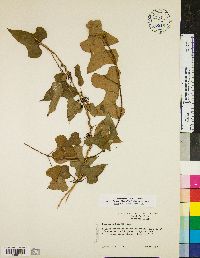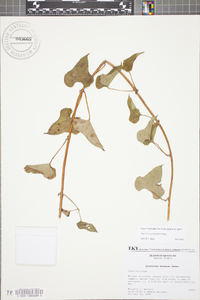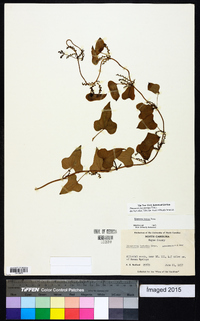
|
|
|
|
Family: Dioscoreaceae
Chinese Yam
[Dioscorea batatas Decne.] |
Plants tuberous; tubers 1-many, on long stalks and deeply buried, spindle-shaped. Stems twining clockwise, unwinged, terete, climbing to 5 m, producing small bulbils (less than 2 cm diam.) in leaf axils. Leaves alternate proximally, usually opposite distally, occasionally ternate, 3-9 × 3-11 cm; petiole as long as blade, base not clasping; blade 7(-9)-veined, hastate-cordate, glabrous, margins 3-lobed, basal lobes spreading, rounded to ± rhombic, median lobe deltate to ovate, apex acuminate or mucronate; primary veins 7(-9); basal leaves often less distinctly lobed or entire and ovate-cordate. Staminate inflorescences axillary, in fascicle of (1-)3-5 spikes, each spike shorter than 5 cm, or primary inflorescence axis elongate and bearing multiple fascicles; spikes bearing flowers singly, flowers bracteate, distributed along rachis in markedly zigzag pattern, internodes less than 2 mm. Pistillate inflorescences 1 per leaf axil, few-flowered, shorter than 5 cm, internodes between mature flowers greater than 1 cm. Staminate flowers: perianth drying dark, tightly cup-shaped; tepals ovate, ca. 1 mm, margins hyaline, apex acute; fertile stamens 6; filaments connate basally; anthers as long as or longer than filaments, thecae distinct, weakly spreading. Pistillate flowers: perianth as in staminate flowers; staminodes 6 in 2 subequal whorls, anthers and filaments more strongly differentiated in inner whorl, filaments less developed in outer whorl, all smaller than fertile stamens. Capsules not reflexed at maturity, broadly ovate, (1.2-) 1.7-2 cm wide. Seeds winged all around. 2n = 140. Staminate plants flowering summer. Thickets, ravines, stream banks, creek bottoms, limesinks, granite outcrops, alluvial woods, roadsides, drainage canals, waste places, fence rows; 0--500 m; introduced; Ala., Ark., Conn., D.C., Fla., Ga., Ky., Md., Mass., Miss., Mo., N.J., N.C., Ohio, Pa., S.C., Tenn., Va., W.Va.; e Asia. Dioscorea polystachya is native to eastern Asia, where it is cultivated for its edible tubers. In North America, it is planted as a garden ornamental and has become naturalized throughout much of the eastern United States. Only one pistillate specimen was encountered from the flora area, the plants apparently propagating vegetatively. Dioscorea polystachya is the earliest published name for this species. The name D. oppositifolia Linnaeus, which has been misapplied to this species, actually refers to an ovate-leaved species that is native to the Indian Subcontinent and is not found in the flora area. For a more detailed nomenclatural history of D. polystachya, see Ting C. T. and M. G. Gilbert (2000).
Perennial from deep-seated tubers to 1 m, the slender stems climbing 1-5 m and twining clockwise; lvs alternate, opposite, or ternate, usually with a small axillary tuber, the blade about as wide as long, halberd-shaped, deeply cordate at base; fr probably never produced in our range; 2n=ca 140-144. Native of China, often escaped from cult. in U.S. and occasional in our range. (D. batatas) Gleason, Henry A. & Cronquist, Arthur J. 1991. Manual of vascular plants of northeastern United States and adjacent Canada. lxxv + 910 pp. ©The New York Botanical Garden. All rights reserved. Used by permission. From Flora of Indiana (1940) by Charles C. Deam Indiana Coefficient of Conservatism: C = null, non-native Wetland Indicator Status: N/A |
This project was made possible in part by the Institute of Museum and Library Services [MG-70-19-0057-19].
Powered by Symbiota

